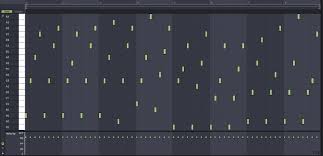How to Create a Driving Melodic Techno Track (Afterlife Style)
Melodic techno has taken over the world’s biggest stages, defined by its powerful emotion, driving rhythms, and vast, cinematic soundscapes. Labels like Afterlife have perfected a sound that is both hypnotic and energetic. But how is it made? This guide will deconstruct the core elements of a classic melodic techno track, giving you a blueprint to create your own.
The Core Elements of the Sound
Before we start, it’s important to understand the key ingredients. A successful melodic techno track isn’t just about one sound, but the interplay between four main elements: a powerful kick, a rolling bassline, atmospheric pads, and, most importantly, a signature arpeggiated lead melody.
Step 1: The Foundation – Kick & Percussion
The foundation of any techno track is the kick drum. For this style, you need a deep, powerful kick with a strong low-end punch and a clean, short tail. It should be punchy but not overly distorted. Program a simple four-on-the-floor pattern as your anchor.
- Kick: Deep, punchy, around 909-style but processed for modern weight.
- Hi-Hats: Use a driving 16th-note closed hi-hat pattern. Add subtle velocity changes and swing to give it a human, rolling feel rather than a rigid, machine-like rhythm.
- Clap/Snare: A clean, punchy clap or snare on beats 2 and 4 provides the classic techno backbeat.
Step 2: The Driving Force – The Bassline
The bassline in a melodic techno track is often a key melodic component. Instead of a simple sub-bass, it’s typically a rhythmic, arpeggiated bass created with a mono synth. A popular technique is to use a saw or square wave with a low-pass filter that opens and closes, creating movement and tension. Crucially, the kick and bass must work together. Use sidechain compression to duck the bassline every time the kick hits, making the kick drum punch through the mix.
Step 3: Creating Atmosphere – Pads & Drones
This is what gives the track its epic, cinematic feel. Use long, evolving pads with slow filter sweeps to create a vast soundscape in the background. These pads shouldn’t be too busy; their job is to fill the space and create emotional depth. Adding a subtle, low-volume drone or atmospheric texture throughout the track can add a professional layer of sonic detail. For more information on synthesis, you can explore resources on synthesizers like the classic Roland TB-303, which pioneered many of these sounds.
Step 4: The Signature Melody – The Main Arpeggio
The main lead is the heart of any great melodic techno track. It’s almost always an arpeggiated sequence from a powerful synthesizer. The key is to find a simple, memorable chord progression and let the arpeggiator do the work. Automate the filter cutoff, delay, and reverb over time to make the melody evolve, especially during breakdowns and build-ups, to create those iconic hands-in-the-air moments.
Need a Head Start?
Creating a professional-sounding track from scratch takes time. If you want to get straight to the finish line with a release-ready production, explore our curated selection of Melodic Techno ghost produced tracks. Each one is a unique, exclusive production waiting for an artist to make it their own.


